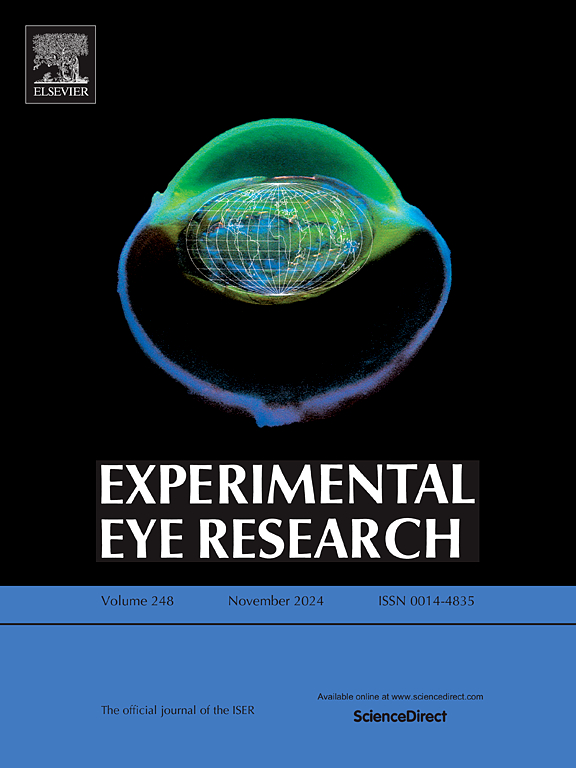Cathepsin H deficiency leads to myopic phenotype in mice
IF 3
2区 医学
Q1 OPHTHALMOLOGY
引用次数: 0
Abstract
Genetic predisposition has been increasingly reported in patients with high myopia. A previous study reported that a deleterious mutation in cathepsin H (CTSH) gene causes high myopia. However, the phenotypic and mechanistic characteristics of Ctsh-deficient mice remain unknown. In this study, we generated a Ctsh knockout mouse model using CRISPR/Cas9, and confirmed the abolishment of Ctsh by Sanger sequencing. In the mouse model, myopic shift was measured by photorefraction and axial elongation was detected by magnetic resonance imaging (MRI). Retinal function detected by electroretinogram (ERG) indicated the scotopic responses of knockout mice were reduced, and slight retinal thinning was observed using optical coherence tomography (OCT). In addition, ribonucleic acid sequencing (RNA-seq) and real-time polymerase chain reaction (RT-PCR) demonstrated gene expression changes in the retinas of knockout mice. Our results indicated that Ctsh plays an important role in emmetropization and that its loss-of-function leads to myopia development.
组织蛋白酶H缺乏导致小鼠近视表型。
遗传易感性已越来越多地报道高度近视患者。先前的一项研究报道了组织蛋白酶H (CTSH)基因的有害突变导致高度近视。然而,ctsh缺陷小鼠的表型和机制特征仍然未知。在本研究中,我们利用CRISPR/Cas9构建了Ctsh敲除小鼠模型,并通过Sanger测序证实了Ctsh的消除。在小鼠模型中,通过光折射测量近视位移,通过磁共振成像(MRI)检测轴向伸长。视网膜电图(ERG)检测的视网膜功能显示,敲除小鼠的暗位反应减弱,光学相干断层扫描(OCT)观察到轻微的视网膜变薄。此外,核糖核酸测序(RNA-seq)和实时聚合酶链反应(RT-PCR)显示基因表达在敲除小鼠视网膜中发生变化。我们的研究结果表明,Ctsh在近视中起着重要的作用,其功能的丧失导致近视的发展。
本文章由计算机程序翻译,如有差异,请以英文原文为准。
求助全文
约1分钟内获得全文
求助全文
来源期刊

Experimental eye research
医学-眼科学
CiteScore
6.80
自引率
5.90%
发文量
323
审稿时长
66 days
期刊介绍:
The primary goal of Experimental Eye Research is to publish original research papers on all aspects of experimental biology of the eye and ocular tissues that seek to define the mechanisms of normal function and/or disease. Studies of ocular tissues that encompass the disciplines of cell biology, developmental biology, genetics, molecular biology, physiology, biochemistry, biophysics, immunology or microbiology are most welcomed. Manuscripts that are purely clinical or in a surgical area of ophthalmology are not appropriate for submission to Experimental Eye Research and if received will be returned without review.
 求助内容:
求助内容: 应助结果提醒方式:
应助结果提醒方式:


